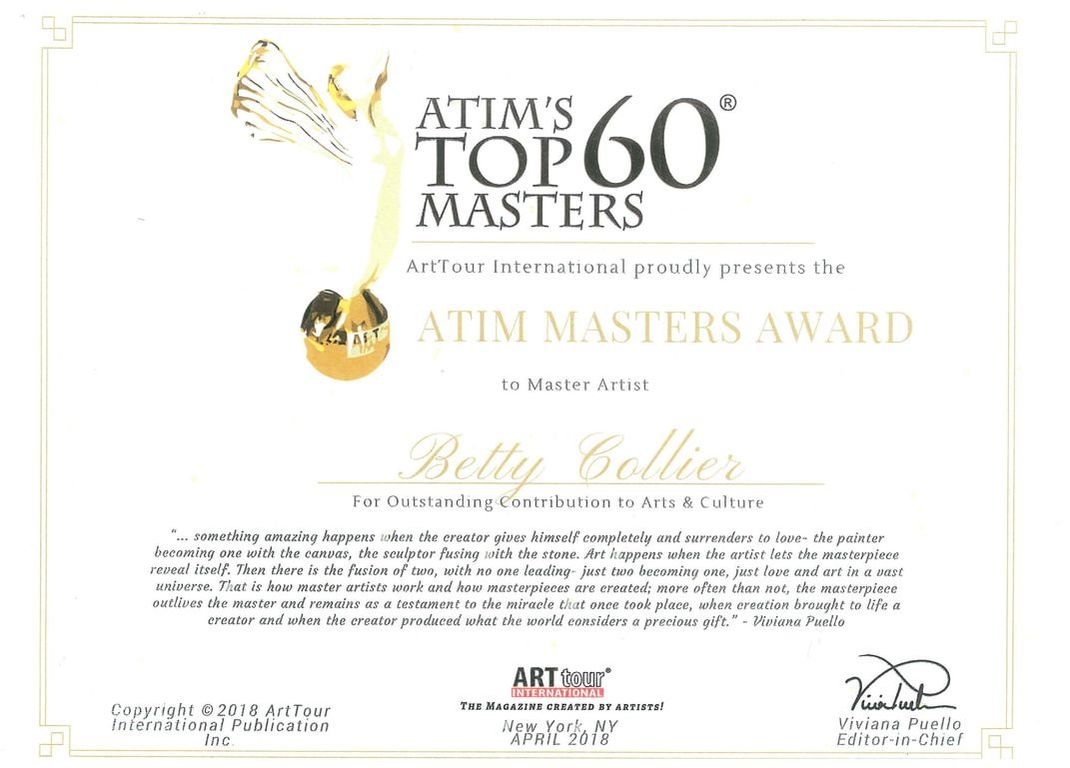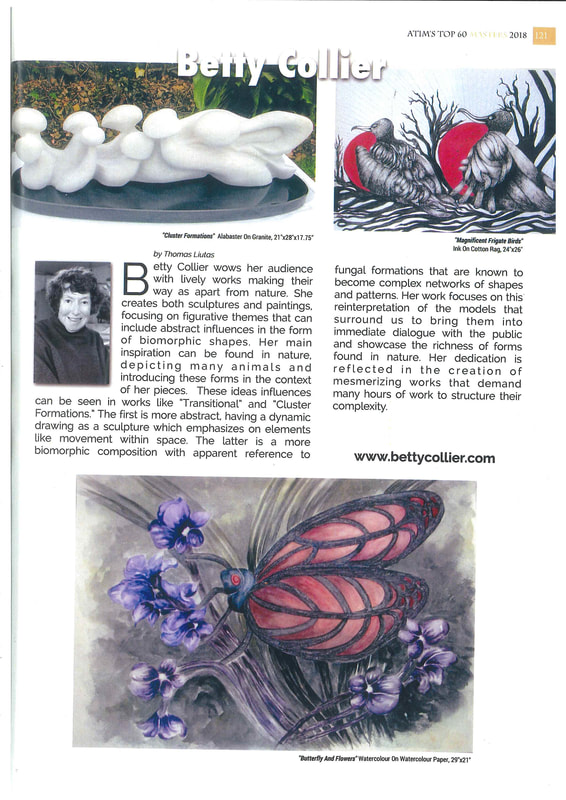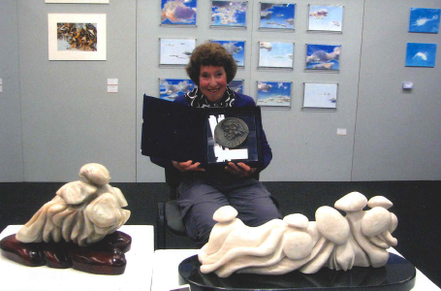News
Featured in Art Tour International, ATIM's Top 60 Masters 2018
An Invitation to Exhibit at the Florence Biennale, Italy, 2015.
The 10th edition of the Florence Biennale took place in The Fortessa Da Basso in Florence, Italy from the 17th - 15th October 2015.
Recognized artists from within their country are invited to exhibit. The main categories are in painting and sculpture with the minor areas including ceramics, drawing, mixed media, photography, digital imagery, videos, installation and jewellery.
This year 343 artists exhibited, most of whom displayed 3 examples of their work. Each artist represents their country with the majority being sponsored by that country. This doesn't appear to be the case with Australian artists as most Australian Artists had to fund their own trips, including transportation of art works to Italy and back to Australia.
The Biennale is not an exhibition to sell art works but to display the trends in art work from around the world at the present time, to use art as a communicator and as a uniting force. People come from all over the world to view the exhibition.
A panel of 12 art professionals from different countries judge the exhibition.
Australia was represented by 11 artists and received 6 medals, of these Steffie Wallace's 2nd in Painting, Betty Collier's 3rd in Sculpture and Terrance Plowright's 5th in Sculpture were the most significant.
Medals were received in the Minor Arts by Ceramicist Sally WAlk, Mixed Media artist Shazia Imbram and digital photographer Marilyn Hutchinson.
Accompanying the exhibition an art book was published displaying a page on each participating artist. This book goes to all major art galleries in the world.
Recognized artists from within their country are invited to exhibit. The main categories are in painting and sculpture with the minor areas including ceramics, drawing, mixed media, photography, digital imagery, videos, installation and jewellery.
This year 343 artists exhibited, most of whom displayed 3 examples of their work. Each artist represents their country with the majority being sponsored by that country. This doesn't appear to be the case with Australian artists as most Australian Artists had to fund their own trips, including transportation of art works to Italy and back to Australia.
The Biennale is not an exhibition to sell art works but to display the trends in art work from around the world at the present time, to use art as a communicator and as a uniting force. People come from all over the world to view the exhibition.
A panel of 12 art professionals from different countries judge the exhibition.
Australia was represented by 11 artists and received 6 medals, of these Steffie Wallace's 2nd in Painting, Betty Collier's 3rd in Sculpture and Terrance Plowright's 5th in Sculpture were the most significant.
Medals were received in the Minor Arts by Ceramicist Sally WAlk, Mixed Media artist Shazia Imbram and digital photographer Marilyn Hutchinson.
Accompanying the exhibition an art book was published displaying a page on each participating artist. This book goes to all major art galleries in the world.
|
Betty Collier at the 2015 Florence Biennale, Florence, Italy. An invitation art exhibition from artists all around the world, showing her medal for 3rd prize in the sculpture section. L-R The Cluster, alabaster on Oregon and Cluster Formations No 3, alabaster on granite.
The 10th Edition of the Florence Biennale Florence, Italy 2015.
Betty Collier received a Third Prize for Sculpture at The Florence Biennale, 2015. Cluster Formations No. 3 Carved Alabaster on Black Granite 2013 H28 W70 D30 This sculpture represents organic shapes inspired by mushrooms, land fissures and rock formations. The rounded tactile flowing forms with deep undercutting and spatial areas create a free flowing harmonious look where the heaviness of the alabaster is disguised by the smooth off white colour. |
The second sculpture
The Cluster Carved Alabaster on Carved Oregan 2012, H28 W40 D45 this sculpture follows a similar theme. In this sculpture the surface is highly polished with the dome like shapes creating a strong flowing tactile grouping and the carved oregan base echoing the above forms. The inner spaces between the dome like forms define and challenge the weight, spatial element. Both sculptures are hand carved and polished, taking two and a half years to complete. The Florence Biennale is important for the arts; it brings together artists of different nationalities, displaying different outlooks and work processes. More importantly it unites artists through visual and verbal communication and fosters friendships. To the viewing public it displays a wide variety of subject matter, media, cultural variations and professional achievements that can only help to promote the arts. |




